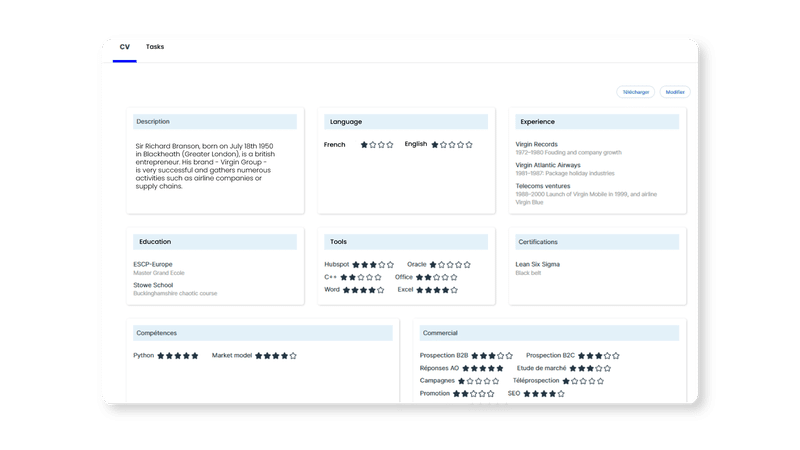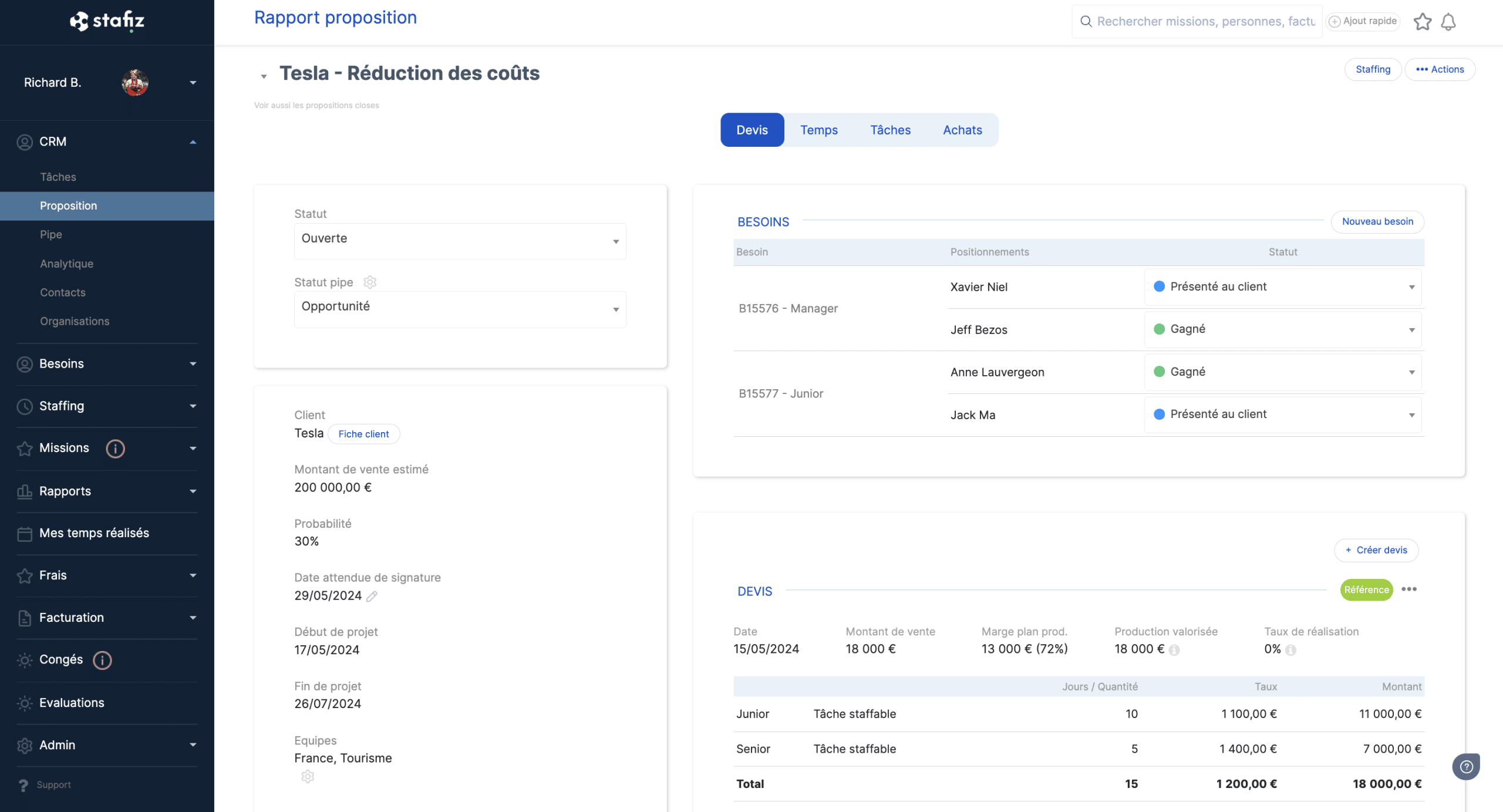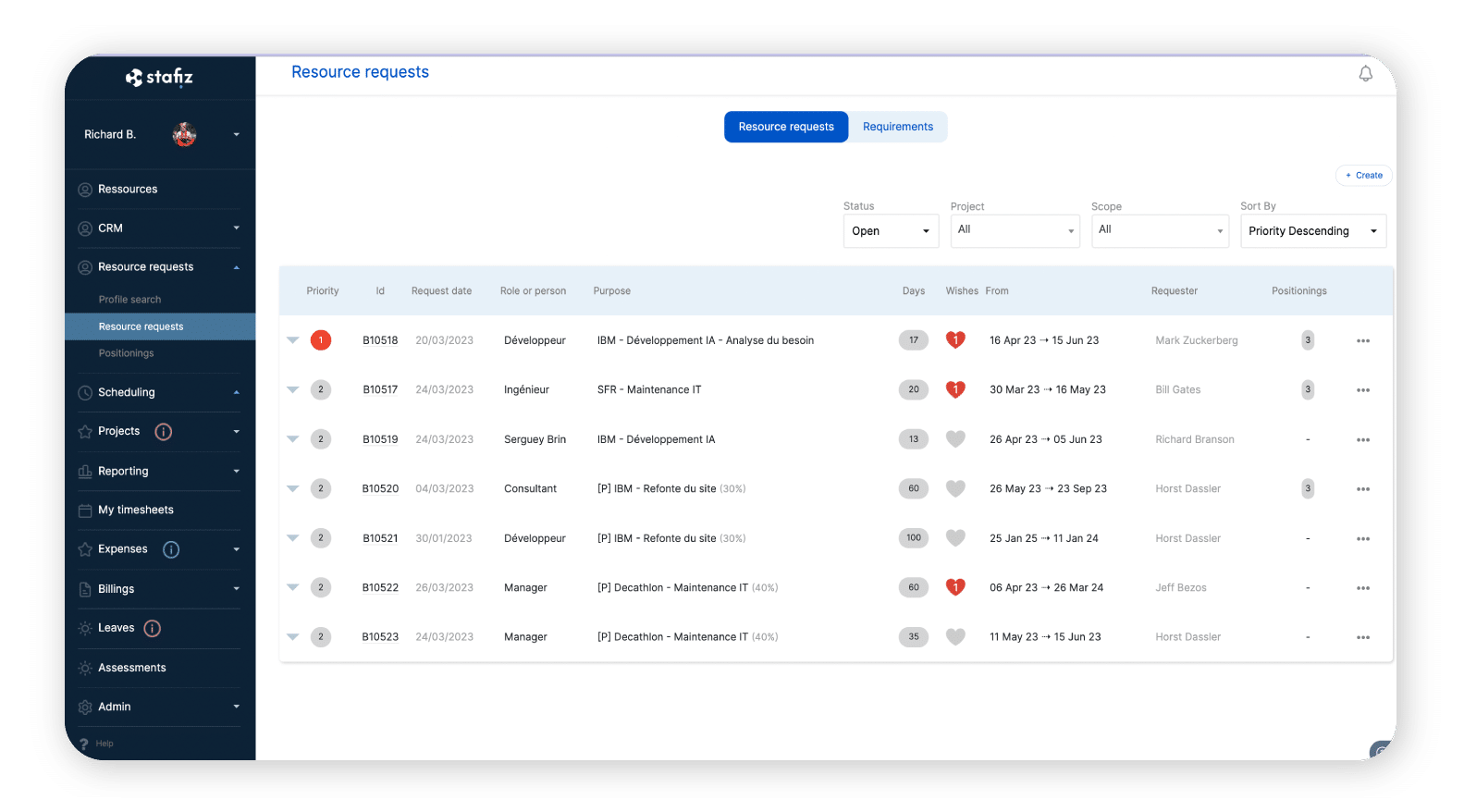Bench time period in IT consulting : How to maximize the occupancy of consultants?

One IT Services is a real talent merchant. It builds teams of cutting-edge consultants whose expertise is leased to clients on long-term projects.
And if the objective is to maintain a continuous activity, it may happen that the assignment is short, or that the profile of an employee is not adapted to the imminent needs.
This period of slack has a name: the intercontract.
What is intercontract?
The inter-contract is a period of intermission between two missions, and where the consultant finds himself without activity.
The IT Services (or former IT services companies) are almost exclusively concerned by the inter-contract because of their activity. Consultants are mobilized for clients outside the company on medium to long-term assignments. It may then happen that no assignment to a mission is possible between the end of a first mission and the launch of a second for various reasons:
- no projects have been won for this period of time,
- the available projects require a greater time commitment than the consultant's current availability,
- The consultant does not have one or more necessary skills.
No bench time period in IT consulting is provided for this period of low point in the Labour Code. However, it is governed by the Syntec collective agreement and recognized as a de facto situation in order to protect employees.
Understanding the challenges of the bench time period
The mission of a IT Services may seem simple at first glance: position your talents on as many missions as possible.
This means not only having the right candidates, but above allanticipating the resource planning in the long term in order to optimize the utilization rate consultants.
Reducing bench time period is therefore a major challenge that could greatly increase your profitability.
Fixed costs not invested
As an employer, you continue to bear the costs related to your employee on an intercontract, such as their fixed salary and charges.
In the long term, these costs can weigh on the balance since they are not reinvested in production that generates income.
In the case of repeated or multiple intercontracts, it is then necessary to arbitrate between the financial performance of your activity and the investment made in the staff.
Performance closely linked to capacity planning
Whether you are a marketing agency, a consulting firm or a software integrator, resource planning on your performance are crucial.
This reality is all the more applicable to IT Services due to the assignment of consultants to large-scale projects, which can last up to several years.
Thus, the more the burden on employees anticipated, the faster your resource needs are identified to optimize billable utilization rate.
Commercial issues
The bench time period represents a risk for your profitability. At the commercial level, you must be able to sell your employees' time at the right time and thus position profiles between two assignments quickly.
This pressure can lead you to take on assignments in a hurry, without considering their alignment with your strategy, or even the capacity available.
However, positioning an unqualified profile for the sole purpose of occupying them can not only tarnish your relationship with the client, but also deprive a future opportunity of a necessary resource.
The impact of the bench time period on consultants
Your employees on the bench may see their motivation and engagement degraded.
This situation of uncertainty can cause a feeling of insecurity, and lead to burnout. Back on assignment, these questions can impact the well-being and productivity of your consultants.
The challenge of your attractiveness is then essential. The consequences of intermission are often responsible for a lower retention rate, greatly impacting your business.
Invest in your employer brand to retain your talent and future-proof your business.
How to manage the activity of consultants during the bench time period ?
As you already know, in order to maintain your activity, the subject of the intermission period must be studied.
So, what to do in intercontract ? That's the million-euro question!
Although a source of uncertainty and risk, you can take advantage of this period of slump, both for the well-being of your employees and for your performance. And to achieve this, Stafiz, our management ERP designed for project sales, is your best asset.
Develop your internal skills
The billable utilization rate is the most closely followed performance indicator. However, the overall occupancy rate gives a less biased view of your employees' work.
Take advantage of these periods of inactivity to expand your skills pool and internal mobility. Skills management is the key to the strategic positioning of candidates, but also to your growth!
The CV and employee profile system allows the qualifications of consultants to be tracked. They can indicate:
- the skills acquired,
- the level achieved for each competency,
- the projects to which they have contributed,
- the skills they want to develop.
The assessment module also allows managers to indicate the skills to be worked on to enable the company to evolve. It is also used to assess the acquisition of skills in order to keep the reference framework up to date.

You then have an operational skills management tool that allows you to plan training for the upcoming inter-contract periods.
Anticipate resource planning to reduce bench time period
Does your tool give you all the visibility you need to minimize inter-contract periods ?
Stafiz integrates your business opportunitiesfor more flexible planning, ready for any eventuality.

Create your proposal. You adjust your quote or the schedule as you go. When expectations become clearer, you can already create resource requirements for project tasks.

These needs will then be visible to sales and project managers, even during pre-sales.
This headroom allows you to see if qualified resources will be available for that period, and to pre-position them as resource planning provisional. Otherwise, training or recruitment schemes can be put in place.
If the mission is won, turn your proposal into a project plan in one click. Temporary positioning is automatically scheduled if the resource is free, but deleted if it has been positioned on another job in the meantime.
As aIT Services, you are surely already taking the challenges of inter-contract very seriously. Maintaining the balance between utilization rate Maximizing and investing in people is what ensures your profitability, but the exercise is complex and can involve many risks.
Do you want to boost your business? Keeping your consultants productive on appropriate assignment levels? We would be happy to discuss your issues in more detail and illustrate how Stafiz can make a difference.
Questions:
Yes. This period of benching is not a breach of contract. His employer is theIT Services and not the client, the employee continues to receive the fixed part of his or her salary.
Consultants are not responsible for the inter-contract and as a result, they continue to receive their social rights (such as the mutual insurance or the accumulation of leave).
Yes, but this possibility must be specified and accepted by theIT Services.
In intercontract, the employee must remain available and reachable in the event of internal activity. However, allowing them to continue this period at their home can exempt you from costs such as participation in transport costs and meal vouchers. Expenses that will have to be maintained in the event of a continued presence in the office.
Yes, but under certain conditions.
- The employer has the legal obligation to notify the employee 2 months in advance.
- The number of days imposed must be regulated to limit abuse.
- It is not possible to impose early leave. As a result, an accepted leave cannot be cancelled.
The inter-contract is neither a fault nor a breach of one's contract. This situation cannot therefore be used to justify a dismissal, regardless of its duration.
However, economic dismissal is an admissible reason. However, he or she must comply with certain conditions:
- a quantifiable drop in activity and revenue over a given period,
- prior redeployment attempts,
- strict compliance with procedures such as preliminary maintenance and notice,
- the possibility of establishing a social plan.


